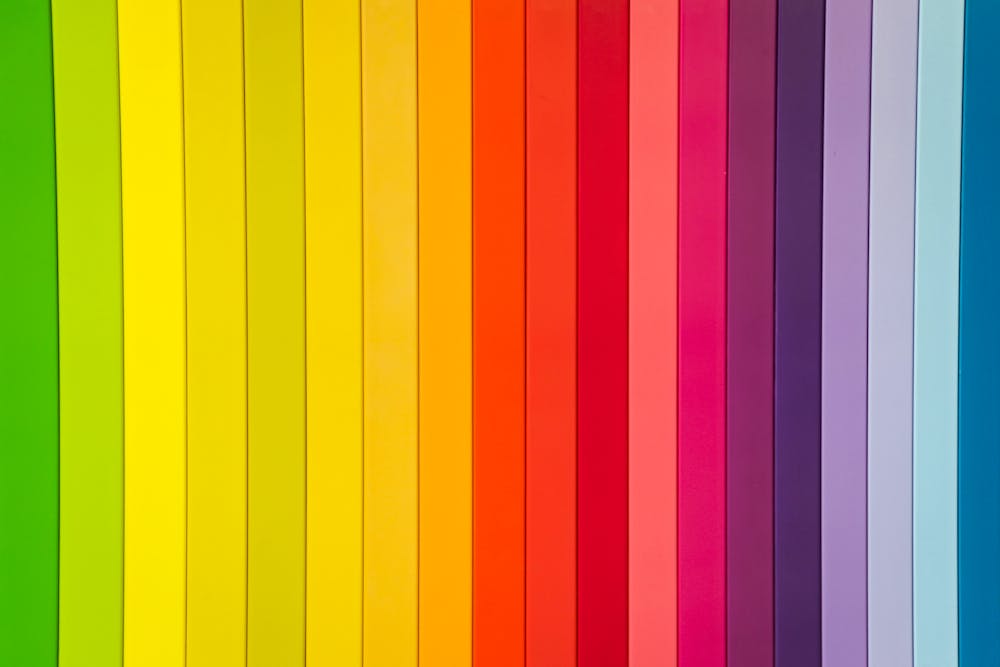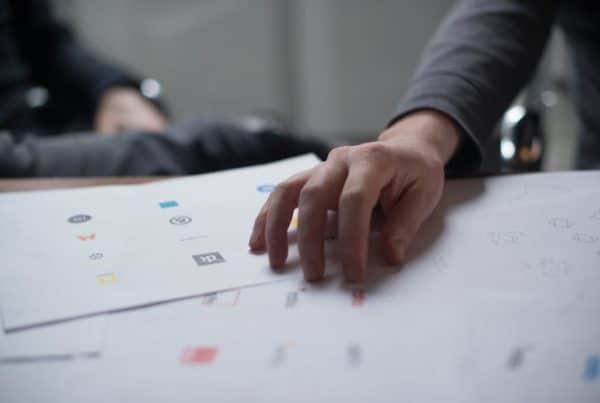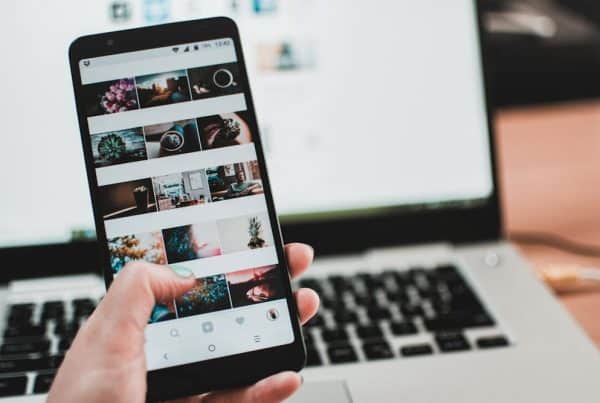Colors have always conveyed a powerful message and have been used to evoke emotions, create contrast, and highlight brand identity. In website design, colors play a crucial role in attracting and engaging users, as well as enhancing the overall visual appeal.
When choosing colors for your website, consider accessibility, visual appeal, and usability. Readability is a key factor, and brand consistency also comes into play. The ideal color scheme should also create ample contrast among background and text colors so readers with vision impairments can easily access the site.
Since 2008, I’ve worked with over a hundred different websites for clients across various industries, and here’s what I’ve learned about picking the ideal color palettes for website design.
The Basics of Color Theory
Every web designer or brand owner should have a basic understanding of color theory and its impact on design. It empowers you to pick the best color combinations for websites, even when hiring a web designer.
Color theory entails studying colors and testing their relationships. It plays a major role in various fields, such as art, design, fashion, and marketing.
Color theory comes in handy when you need to create a visually stimulating web design that’s also consistent with your brand.
Here are a few key terms you need to know:
- Hue: the base color of an object, such as red, blue, or green.
- Saturation: the intensity of a color.
- Value: It describes how light or dark a color is.
These terms are central to color theory as well as web design and branding efforts.
Primary Colors
You can create most colors by mixing two or more other colors, but primary colors exist naturally, and you can’t mix any colors to create them.
These primary colors are three:
- Red.
- Yellow.
- Blue.
You can also call them pure colors because they aren’t mixtures of other colors.
Secondary Colors
Secondary colors are any colors that you obtain when you mix two primary colors in a 1:1 ratio. The three secondary colors are:
- Green (created by mixing blue and yellow.)
- Orange (created by mixing red and yellow.)
- Purple (created by mixing red and blue.)
Tertiary Colors
Tertiary colors are 1:1 mixtures of primary and secondary colors. You can call them:
- Red-orange.
- Yellow-green.
- Blue-purple.
Also called intermediate colors, tertiary colors are popular in fashion and interior design.
Color Wheel Fundamentals and Color Relationships
Color theory states that colors can either clash or coexist harmoniously depending on their relationships. Color clashing happens when two colors are placed next to each other with no common hue or color temperature (cool or warm).
The color wheel is a tool for artists, designers, and marketers to mix and match colors to find the perfect set. It’s a circle that features primary, secondary, and tertiary colors and visually represents color relationships.
The three types of color relationships include:
1. Complementary Colors
Complementary colors are like opposites, and they sit 180 degrees from each other on the color wheel. Black and white are traditionally considered complements, as are:
- Blue and orange.
- Red and green.
- Yellow and purple.
Knowing how to use complementary colors in your designs can help you achieve balance and make your design more visually appealing.
2. Analogous Colors
These are colors that lie adjacent to each other on the color wheel. They have a similar hue and can create a sense of harmony and cohesiveness in designs.
Analogous colors don’t clash, making them a safe and easy color combination to use. So, they’re common in branding and interior design.
Some examples of analogous colors are:
- Red, orange, and yellow.
- Blue, green, and teal.
- Purple, pink, and magenta.
3. Triadic Colors
Triadic colors are three colors evenly spaced apart on the color wheel. A triadic color scheme creates a vibrant contrast while still maintaining balance.
Some examples of triadic color combinations are:
- Red, blue, and yellow.
- Orange, green, and purple.
Triadic colors can add energy and liveliness to your designs, making them perfect for event posters or advertisements. Don’t overuse this color combination as it can quickly become overwhelming.
The Psychology of Colors
Understanding color theory and how different colors work together is essential, but considering the psychological effects of colors is also essential.
Colors are potent in evoking different emotions in people, so choose colors carefully depending on your target audience and brand goals. Web colors can affect user experience, and we know why user experience matters in web design.
Common Psychological Color Association
- Blue: trust, reliability, and calmness.
- Red: passion, energy, and excitement.
- Yellow: happiness, optimism, and warmth.
- Green: growth, nature, and health.
- Purple: luxury, creativity, and royalty.
- Orange: enthusiasm, creativity, and warmth.
- Black: sophistication, power, and mystery.
- White: cleanliness, simplicity, and purity.
- Pink: femininity, youthfulness, and romance.
- Brown: stability, earthiness, and reliability.
Art comes when you blend these color connotations while abiding by contrast and hue theories to achieve your desired result. Your starting point should be the message or feeling you want to convey.
Define Your Brand Message for the Best Website Color Combination
The best way to choose color combinations for a website starts with defining your brand message. Consider the following:
- What is your brand’s tone of voice?
- What emotions do you want to evoke in your audience?
- Who is your target audience, and what are their preferences?
These questions will help you select the right color combination for your website that accurately reflects your brand and resonates with your audience.
Additional Tips for Choosing the Perfect Color Combination
- Use a color wheel: A color wheel can be an excellent tool for finding complementary or triadic colors.
- Keep it simple: Don’t use too many colors; it can overwhelm the viewer. Stick to 2-3 main colors and use neutrals for balance.
- Consider color psychology: Again, colors affect people’s mood and attitude, so you need to appreciate the psychological impact of each color before using it on your website.
- Test and adjust: Be bold, experiment with different color combinations, and get feedback from others before finalizing your website’s color scheme.
Research Color Combinations That Work Well Together
When I listed no 4, test and adjust, I meant doing it before launching your website. You need to research and gather information about color combinations that work well together to create a visually appealing website.
I started this post by explaining color theory and its importance, but it’s crucial to mention that you don’t have to start from scratch. Many resources can help you select the perfect color combination for your website.
Some popular resources include:
- Adobe Color is a tool that empowers users to browse different color combinations created by other users and create custom color schemes.
- Coolors is a tool for generating random color palettes, which you can customize by adjusting the hue, saturation, and brightness.
- Color Hunt: This website features a curated collection of color palettes that you can browse in search of inspiration.
Examples of Effective Web Color Schemes
To give you a better idea of how color combinations can impact a website, here are three examples of effective web color schemes:
- Monochromatic: This color scheme uses variations of the same hue to create a harmonious and minimalist look. It’s commonly used in modern and elegant websites.
- Analogous: This scheme uses colors that neighbor each other on the color wheel. It’s effective for creating a cohesive and calming effect. It’s a favorite among nature-inspired and organic-themed brands.
- Complementary: This scheme combines two opposite colors on the color wheel, creating high contrast and energy. It’s commonly used in sports or entertainment-related websites.
Remember, these are just a few examples, and there are endless possibilities for web color combinations.
What Works for Others May Not Work for You
While drawing inspiration from other websites is helpful, it’s essential to remember that what works for others may not work for you. I’m not discounting templates as many brand owners often ask me if templates are better than custom designed website, but they aren’t going to fit everyone’s needs.
There are no ‘one size fits all’ solutions for web design. Even templates give web designers a starting point and allow them to tweak the colors, hues, and HTML aspects to fit your brand’s unique personality and message.
I always anchor everything on your brand goals and what your target audience needs. The perfect color scheme resonates with your brand’s identity and connects with your target audience.
As I conclude, let me remind you of the importance of professional web design. Doing everything yourself involves a lot of trial and error. My team and I have already gone through thousands of hours learning what works and what doesn’t. Contact us today to talk about how we can help you!




